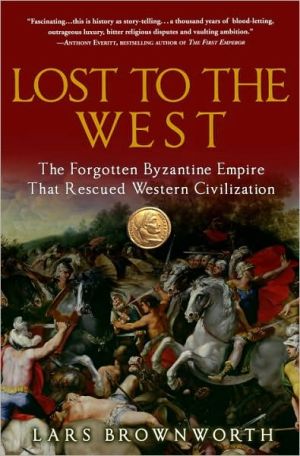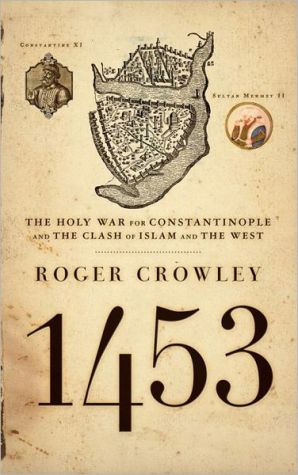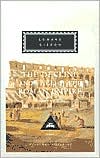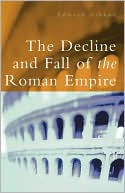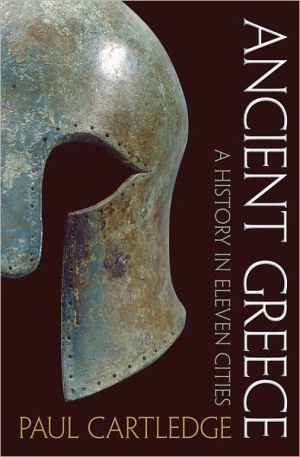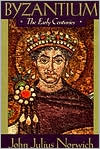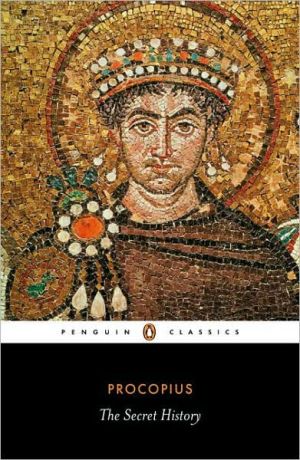Lost to the West: The Forgotten Byzantine Empire That Rescued Western Civilization
In AD 476 the Roman Empire fell–or rather, its western half did. Its eastern half, which would come to be known as the Byzantine Empire, would endure and often flourish for another eleven centuries. Though its capital would move to Constantinople, its citizens referred to themselves as Roman for the entire duration of the empire’s existence. Indeed, so did its neighbors, allies, and enemies: When the Turkish Sultan Mehmet II conquered Constantinople in 1453, he took the title Caesar of Rome,...
Search in google:
In AD 476 the Roman Empire fell–or rather, its western half did. Its eastern half, which would come to be known as the Byzantine Empire, would endure and often flourish for another eleven centuries. Though its capital would move to Constantinople, its citizens referred to themselves as Roman for the entire duration of the empire’s existence. Indeed, so did its neighbors, allies, and enemies: When the Turkish Sultan Mehmet II conquered Constantinople in 1453, he took the title Caesar of Rome, placing himself in a direct line that led back to Augustus.For far too many otherwise historically savvy people today, the story of the Byzantine civilization is something of a void. Yet for more than a millennium, Byzantium reigned as the glittering seat of Christian civilization. When Europe fell into the Dark Ages, Byzantium held fast against Muslim expansion, keeping Christianity alive. When literacy all but vanished in the West, Byzantium made primary education available to both sexes. Students debated the merits of Plato and Aristotle and commonly committed the entirety of Homer’s Iliad to memory. Streams of wealth flowed into Constantinople, making possible unprecedented wonders of art and architecture, from fabulous jeweled mosaics and other iconography to the great church known as the Hagia Sophia that was a vision of heaven on earth. The dome of the Great Palace stood nearly two hundred feet high and stretched over four acres, and the city’s population was more than twenty times that of London’s.From Constantine, who founded his eponymous city in the year 330, to Constantine XI, who valiantly fought the empire’s final battle more than a thousand years later, the emperors who ruled Byzantium enacted a saga of political intrigue and conquest as astonishing as anything in recorded history. Lost to the West is replete with stories of assassination, mass mutilation and execution, sexual scheming, ruthless grasping for power, and clashing armies that soaked battlefields with the blood of slain warriors numbering in the tens of thousands.Still, it was Byzantium that preserved for us today the great gifts of the classical world. Of the 55,000 ancient Greek texts in existence today, some 40,000 were transmitted to us by Byzantine scribes. And it was the Byzantine Empire that shielded Western Europe from invasion until it was ready to take its own place at the center of the world stage. Filled with unforgettable stories of emperors, generals, and religious patriarchs, as well as fascinating glimpses into the life of the ordinary citizen, Lost to the West reveals how much we owe to this empire that was the equal of any in its achievements, appetites, and enduring legacy.From the Hardcover edition. Publishers Weekly The once common idea that the lights went out on classical and Western civilization when Rome fell in 476 C.E. has long since been debunked, but Brownsworth weighs in to illustrate that the Roman Empire's center of power simply shifted to Constantinople. In a narrative by turns spellbinding and prosaic, Brownsworth marches us through centuries of history, beginning long before the fall of Rome, and introduces the successive rulers of Byzantium, from Christian emperors to Muslim sultans, detailing a culture he describes as both familiar and exotic. He follows religious, political and cultural change up through the Islamic conquest of 1453. Christian refugees fled Byzantium into Europe, taking with them their longstanding love of ancient culture and introducing Western Europe to Plato, Demosthenes, Xenophon, Aeschylus and Homer, fanning the flames of the renaissance of Hellenistic culture that had already begun in various parts of Europe. Although Brownsworth admirably illustrates the ways that the Byzantine Empire lives on even today, Judith Herrin's Byzantium: The Surprising Life of a Medieval Empire offers a more compelling and thorough history of this empire. Maps. (Sept.)
1\ Diocletian's Revolution The long-suffering people of the third-century Roman Empire had the distinct misfortune to live in interesting times. For three centuries before Constantine's birth, Roman architects, engineers, and soldiers had crisscrossed the known world, bringing order and stability to the barbaric, diverse lands beyond the frontiers of Italy. In the wake of the mighty Pax Romana came more than fifty-thousand miles of arrow-straight, graded roads and towering aqueducts, impervious alike to the mountains and valleys that they spanned. These highways were the great secret of empire, providing access to markets, ease of travel, and an imperial mail system that could cover more than five hundred miles in a single day. Graceful cities sprang up along the major routes, complete with amphitheaters, public baths, and even indoor plumbing--a visible testament to the triumph of civilization. But by the third century, time had ravaged the empire's glory, and revolts had stained its streets with blood. Those impressive Roman roads that had so effectively exported the empire now became its greatest weakness as rebel armies and barbarian hordes came rushing in. No one--not even the ephemeral emperors--was safe in those uncertain times. In the first eight decades of the century, twenty-nine men sat on the imperial throne, but only one escaped murder or capture to die a natural death. \ Apathy and enervation seemed to be everywhere, sapping the strength of once solid Roman foundations. The military, too busy playing kingmaker to maintain itself, fell victim like everything else to the sickness of the age. In 259, the proud Emperor Valerian led his soldiers against the Persians, and suffered one of the greatest humiliations in Roman history. Captured by the enemy, he was forced to endure the indignity of being used as a footstool by the gleeful Persian king. When the broken emperor at last expired, the Persians had him flayed, dyeing the skin a deep red color and stuffing it with hay. Hanging the gruesome trophy on a wall, they displayed it to visiting Roman ambassadors as a constant reminder of just how hollow the myth of the invincible legions had become. \ Such public humiliation was galling, but Roman writers had been lamenting the decay of the national character for years. As early as the second century bc, Polybius blamed the politicians whose pandering had reduced the Republic to mob rule, Sallust railed against the viciousness of political parties, and Livy--the most celebrated writer of Rome's golden age--had written that "these days . . . we can bear neither our diseases nor their remedies."*\ Now, however, a more ominous note crept in. The predictions of disaster gave way to glowing panegyrics celebrating the greatness and permanence of emperors who were plainly nothing of the sort. The men on the throne seemed like shadows flitting across the imperial stage, an awful confirmation that the gods had turned their backs on humanity. Barbarian enemies were gathering like wolves on the frontiers, but the generals sent against them more often than not used their swords to clear a path to the throne. The army, once a servant of the emperor, now became his master, and dynasties rose and fell with bewildering frequency.\ The chaos of nearly continuous civil war made it hard to tell who the emperor actually was, but the tax collectors came anyway, with their unceasing demands for more money. The desperate shadow emperors tried to save money by reducing the silver content of their coins, but the resulting inflation crippled the economy, and most of the empire reverted to the barter system. Terrified by the mounting uncertainty, men took refuge in mystery religions that taught that the physical world was fleeting or evil, and put their hopes in magic, astrology, and alchemy. Life was full of pain, and the more extreme refused marriage or committed suicide to escape it. The very fabric of so-ciety was coming apart, and rich and poor alike prayed for deliverance. \ Salvation came, unexpectedly enough, from Dalmatia. A tough soldier named Diocletian from that backward, rugged land of craggy peaks and lush forests rose up to claim the throne. Assuming power in the usual way by assassinating his predecessor and climbing over the bodies of rival armies, Diocletian was pragmatic enough to admit what others had only dimly suspected. The empire was simply too large to be successfully governed by one man in these troubled days. Its vast territory embraced the entire Mediterranean, stretching from the damp forests of Britain in the north to the blazing deserts of Egypt in the south, from the Rock of Gibraltar in the west to the borders of Persia in the east. Even if he spent his entire life in the saddle, Diocletian couldn't possibly react quickly enough to stamp out every crisis, nor could he dispatch surrogates to fight on his behalf; recent imperial history provided too many examples of such generals using their swords to clear a path to the throne. If the wobbling empire were to be preserved at all, Diocletian needed to somehow shrink its enormous size--a task that had overwhelmed all of his immediate predecessors. Few leaders in history can have started a reign with such a daunting job, but the pragmatic Diocletian found an unorthodox solution: He raised an old drinking buddy named Maximian to the rank of senior emperor, or Augustus, and split the world in half. \ It wasn't quite as revolutionary a decision as it sounded, especially because the Empire was already divided linguistically. Long before Rome had dreamed of world conquest, Alexander the Great had swept east to India, crushing all who stood against him and forging the unwieldy territories into an empire. In his footsteps had come Hellenization, and though Alexander's empire had crumbled with his death, Greek culture seeped in and took root. Rome had spread from the west like a veneer over this Hellenized world, superior in arms but awed by the older culture's sophistication. Latin was spoken in the eastern halls of power, but not in its markets or homes. In thought and character, the East remained firmly Greek. \ Handing over the western areas of the empire, where Latin was the dominant language, to Maximian, Diocletian kept the richer, more-cultured Greek east for himself. In theory, the empire was still one and indivisible, but each half would have a drastically different fate, and the rough line that was drawn between them still marks the divide between eastern and western Europe today. The full ramifications wouldn't become clear for another two centuries, but Diocletian had effectively divided the world into Roman and Byzantine halves. \ Sharing power with another man was a dangerous game for Diocletian to play since it ran the obvious risk of creating a rival, but Maximian proved to be an extremely loyal colleague. Pleased by the success, and aware that two men were still not enough to stem the tide of invaders streaming over the frontiers, Diocletian divided power again by appointing two junior emperors (Caesars). These men were given full authority to lead armies and even issue laws, and greatly eased the burdens of administration by the senior rulers. Four men could now claim an imperial rank, and though for the moment they were remarkably efficient, only time would tell if this "tetrarchy" (rule of four) would be a team of rivals or colleagues. \ Diocletian, meanwhile, was just getting warmed up. The lightened workload enabled him to carry out a thorough reorganization of the cluttered bureaucracy. Replacing the chaotic system with a clean, efficient military one, he divided the empire into twelve neat dioceses, each governed by a vicar who reported directly to his emperor.* Taxes could now be collected with greater efficiency, and the money that poured into the treasury could better equip the soldiers guarding the frontiers. With budget and borders in hand, Diocletian now turned to the monumental task of stabilizing the crown itself. \ The emperor understood better than any man before him just how precarious the throne had become. Numerous revolts had made the army loyal to the personality, not the position, of the emperor, and such a situation was inherently unstable. No one man, no matter how powerful or charismatic, could keep every segment of the population happy, and the moment some vulnerability was spotted, civil war would erupt. In earlier days, the royal blood of long-lived dynasties had checked ambition, but now that any man with an army could make himself emperor, something more was needed. To break the cycle of rebellion and war, Diocletian needed to make the position of emperor respected regardless of who occupied the throne. \ This was the great struggle of the ancient world. Stability was needed for an orderly succession, but often such stability could only be achieved by a tyrant, and every dictator who justified his seizure of power further undermined the principle of succession. In any case, the idea of elevating the concept of the throne flew in the face of established tradition. The last five decades had seen emperors drawn from among the army, men who went to great lengths to prove that they were just like the men they commanded. They ate with their troops, laughed at their jokes, listened to their worries, and tried their best to hold on to their loyalty. Such a common touch was necessary; without it, you could easily miss the first flickers of unhappiness that might ignite into civil war, but it also reinforced the idea that emperors were just ordinary men. Mere mortals could be killed and replaced at will; Diocletian had to prove that emperors were something else entirely. If he failed to change that, then all that he had accomplished would be undone the moment he fell from power. \ The Roman Empire had a long tradition of masking its autocracy behind the trappings of a republic. The first emperor, Augustus, had declined to even carry the title of emperor, preferring instead the innocuous "first citizen." For more than three centuries, the Roman legions had proudly carried standards bearing the legend SPQR,* as if they served the will of the people instead of the whim of a tyrant. Now, however, Diocletian wanted to change all that. No longer would the imperial authority be masked behind the worn veneer of the long dead republic. Displays of naked power would awe the populace, whereas pretending to be the "first among equals" had tempted them to revolt. \ Religion gave him the perfect outlet for his new political theory. Power and legitimacy didn't flow up from the people, it flowed from the gods down--and Diocletian was more than just a representative of Jupiter, he was a living god himself. Those who were admitted to see him were made to prostrate themselves and avert their gaze from the brilliance of his presence. It was an impressive spectacle, and Diocletian made sure to dress the part. There would be no more simple military clothes for the divine master of the civilized world. A splendid diadem adorned his head--he was the first emperor to wear one--and a golden robe was draped around his shoulders. Cloaked in elaborate ceremonies borrowed from the East, where traditions of -divine rulers ran deep, Diocletian now removed himself from the sight of ordinary mortals, a god among men, surrounded by the impenetrable layers of the imperial court. \ Propping up the wobbly throne with the might of Olympus was a stroke of brilliance that had nothing to do with arrogance or self-importance. In a world of chronic revolts, there was nothing like the threat of a little divine retribution to discourage rebellion. Now revolts were acts of impiety, and assassination was sacrilege. At a stroke, Diocletian had created an autocratic monarch, a semidivine emperor whose every command had the full force of religion backing it up. Though the faith behind it would change, this model of imperial power would be the defining political ideology of the Byzantine throne. \ The pagans of the empire accepted it all willingly enough. They were pantheistic and could easily accommodate a divine emperor or two--they had in fact been deifying their dead rulers for centuries. Unfortunately for Diocletian, however, not all of his citizens were pagan, and his claims of divinity brought him into sharp conflict with the fastest-growing religion in the empire. \ It wasn't in the least bit surprising that Romans were abandoning the traditional gods. The recent reforms of Diocletian had undoubtedly made things somewhat easier, but for the vast majority of citizens, life was still on the whole miserably unjust. Oppressed by the heavy tax burden, made worse by the corruption of half a century of chaos, the common man found no protection in the tainted courts and had to watch helplessly as the rich expanded their lands at his expense. Crushed into hopelessness, more and more people took refuge in the different "mystery cults," the most popular of which was Christianity. \ Against the arbitrary injustice of the world all around them, Christianity held out hope that their suffering wasn't in vain; that the seeming triumph of their grasping tormentors would be reversed by an all-powerful God who rewarded the just and punished the wicked. They weren't alone in a dark and fallen world, but could be nourished by the hand of a loving God who sustained them with the promise of eternal life. This physical world with all its pain was only fleeting and would pass away to be replaced by a perfect one where sorrow was unknown and every tear was wiped away. The old pagan religion, with its vain, capricious gods, and pale, shadowy afterlife, could offer nothing so attractive. \ When the imperial officials showed up to demand a sacrifice to the emperor, most Christians flatly refused. They would gladly pay their taxes and serve in the army or on committees, but (as they would make abundantly clear) Christianity had room in it for only one God. No matter how powerful he might be, the emperor was just a man. \ This rejection of Diocletian's godhood struck at the very basis of imperial authority, and that was one thing the emperor wasn't prepared to tolerate. These dangerous rebels--godless men who denied all divinity--had to be wiped out. An edict demanding sacrifice to the emperor on pain of death was proclaimed, and the Roman Empire launched its last serious attempt to suppress Christianity. \ The effects were horrendous, especially in the east, where the edict was enforced with a terrible thoroughness. Churches were destroyed, Christian writings were burned, and thousands were imprisoned, tortured, or killed. Despite the fervor with which they were carried out, the persecutions couldn't hope to be successful. Pagans and Christians had been more or less coexisting for years, and the suffering of the church was met with sympathy. There were the old stories, of course, the whispered tales of cannibalism and immorality, of Christians gathered in secret, eating their master's flesh and drinking his blood, but nobody really believed them anymore. Most pagans refused to believe that a religion that encouraged payment of taxes, stable families, and honesty in trade could be full of dangerous dissidents, threatening the security of the state. Christians were neighbors and friends, common people like themselves, struggling as best they could to make it in a troubled world. Christianity in any case couldn't be swept under the rug or persecuted out of existence. It had already spread throughout the empire and was well on its way to transforming the world.\ From the Hardcover edition.
Guide to MapsPrologue: Roman Roots1 Diocletian's Revolution 12 Constantine and the Church Ascendant 113 The Pagan Counterstroke 274 Barbarians and Christians 395 A Dreadful Rumor from the West ... 496 The Fall of Rome 577 The Rise of Peter Sabbatius 678 Nika! 739 Of Buildings and Generals 8310 Yersinia Pestis 10311 A Persian Fire 11512 The House of War 12913 The Image Breakers 13714 The Crumbling Empire 14515 The Turning Tide 15716 The Glorious House of Macedon 16717 The Brilliant Pretender 17918 Death and His Nephew 19319 Basil the Bulgar Slayer 20720 The March of Folly 21921 The Comneni Recovery 22922 Swords That Drip with Christian Blood 24923 The Empire in Exile 26124 The Brilliant Sunset 27125 The Eternal Emperor 287Epilogue: Byzantine Embers 301Selected Bibliography 305Appendix Emperors of Constantinople 309Acknowledgments 315Index 317
\ Publishers WeeklyThe once common idea that the lights went out on classical and Western civilization when Rome fell in 476 C.E. has long since been debunked, but Brownsworth weighs in to illustrate that the Roman Empire's center of power simply shifted to Constantinople. In a narrative by turns spellbinding and prosaic, Brownsworth marches us through centuries of history, beginning long before the fall of Rome, and introduces the successive rulers of Byzantium, from Christian emperors to Muslim sultans, detailing a culture he describes as both familiar and exotic. He follows religious, political and cultural change up through the Islamic conquest of 1453. Christian refugees fled Byzantium into Europe, taking with them their longstanding love of ancient culture and introducing Western Europe to Plato, Demosthenes, Xenophon, Aeschylus and Homer, fanning the flames of the renaissance of Hellenistic culture that had already begun in various parts of Europe. Although Brownsworth admirably illustrates the ways that the Byzantine Empire lives on even today, Judith Herrin's Byzantium: The Surprising Life of a Medieval Empire offers a more compelling and thorough history of this empire. Maps. (Sept.)\ \ \ \ \ Library Journal"Lost" and "forgotten" are surely strange words for an empire that is well noted for its preservation of ancient cultures. This is that kind of thumping, old-fashioned popular history that could have been written a hundred years ago. Brownworth, a former high school history teacher, traces the Byzantine Empire from its founding by Constantine in 328 C.E. to its conquest by the Ottoman Turks in 1453. He is fond of semilegendary stories of treacherous dynasts and valiant generals (from Belisarius to last emperor Constantine XI) and doesn't like more modern perspectives, such as exploring sources and economics and everyday culture—although there is some discussion of religious conflicts. Most significantly, he largely ignores the magnificent Byzantine artistic tradition. VERDICT Adrian Goldsworthy's recent How Rome Fell is a much more successful work in this genre that treats the early years of Byzantium. This book will provide an undemanding general reader new to the subject with a first glimpse of the Byzantine Empire.—Stewart Desmond, New York\ \ \ Kirkus ReviewsA history lecturer illuminates the fractious, little-studied period between the fall of the Roman Empire in the West and rise of the Ottomans in the 15th century. With the breakup of the Roman Empire by Diocletian in the third-century CE into West and East, largely along linguistic lines, two distinct identities were forged over the succeeding centuries and grew increasingly estranged from and antagonistic to each other: Latin vs. Greek and Catholic vs. Orthodox. Brownworth examines the long-maligned Eastern half of the Empire, which saw its capital of Nova Roma chosen by Constantine the Great in 328 CE become the glorious, inimitable city of Constantinople. The author reminds us that the denizens of the East always referred to themselves as Roman, and the term Byzantium was later applied by Enlightenment scholars. Brownworth traces the highlights over the next 1,000 years of violent upheaval and murderous dynastic succession: e.g., early doomed attempts by Julian to repaganize the empire; fighting back the assaults by the barbarians and the sacking of Rome; the golden age under Justinian, who established Roman Law and reconquered numerous lost lands; and meeting the Islamic challenge from the seventh-century onward with holy wars and crusades until the ultimate devastation of Constantinople by the Turks in 1453. While the East held many of the ancient secular texts safe from the so-called Dark Ages that stymied the West, the author concentrates mostly on military, rather than cultural, events. Brownworth delivers just enough of the big picture for interested readers to pursue specific events in greater detail. An energetic look at a still-misunderstood period in late antiquity. Agent:Tina Bennett/Janklow & Nesbit\ \
